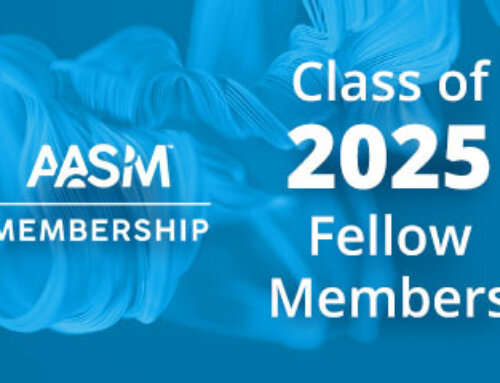DARIEN, IL – A new position statement from the American Academy of Sleep Medicine warns that drowsy driving is a serious public health concern requiring greater public awareness and increased efforts to improve preventive education.
The AASM reports that drowsy driving, which is defined as the operation of a motor vehicle while impaired by a lack of adequate sleep, can have the same consequences as driving while under the influence of drugs and alcohol. Drowsiness compromises driving ability by reducing alertness and attentiveness, delaying reaction times, and hindering decision-making skills. Drowsy driving also tends to occur at high speeds, and the driver is often unable to attempt to avoid a crash, resulting in serious accidents.
“Every year thousands of people die in preventable motor vehicle accidents caused by drowsy driving,” said AASM President Dr. Nathaniel Watson. “The American Academy of Sleep Medicine believes that an awake and alert driver makes the roadways safer.”
The position statement is published in the Nov. 15 issue of the Journal of Clinical Sleep Medicine.
The AAA Foundation for Traffic Safety estimates that drowsy driving causes an average of 328,000 crashes annually in the U.S., including 6,400 fatal crashes. Young drivers between the ages of 16 and 24 years are most at risk of getting into an accident while driving drowsy, and males have a higher risk than females.
Through its Sleep and Transportation Safety Task Force, the AASM has developed model drowsy driving language for states to include in driver’s manuals, educational curricula and licensing examinations. The AASM also encourages the automobile insurance industry to implement drowsy driving educational discount programs.
According to the AASM, drowsiness while driving can be a symptom of a chronic sleep disease such as obstructive sleep apnea. Anyone who struggles to stay awake behind the wheel, despite getting adequate sleep, should discuss the problem with a doctor. Help for an ongoing sleep problem is available from board-certified sleep medicine physicians at more than 2,500 AASM accredited sleep centers across the U.S.
The AASM, together with its partners in the National Healthy Sleep Awareness Project, encourages every driver to take responsibility for staying “Awake at the Wheel” by making it a daily priority to get sufficient sleep, refusing to drive when sleep-deprived, recognizing the signs of drowsiness, and pulling off the road to a safe location when sleepy. Learn more at www.projecthealthysleep.org.
To request a copy of the position statement, “Confronting Drowsy Driving: The American Academy of Sleep Medicine Perspective,” or to arrange an interview with an AASM spokesperson, please contact Communications Coordinator Lynn Celmer at 630-737-9700, ext. 9364, or lcelmer@aasm.org.
About the American Academy of Sleep Medicine
Established in 1975, the American Academy of Sleep Medicine (AASM) improves sleep health and promotes high quality patient centered care through advocacy, education, strategic research, and practice standards. The AASM has a combined membership of 11,000 accredited member sleep centers and individual members, including physicians, scientists and other health care professionals. For more information about sleep and sleep disorders, including a directory of AASM accredited member sleep centers, visit www.sleepeducation.org.




